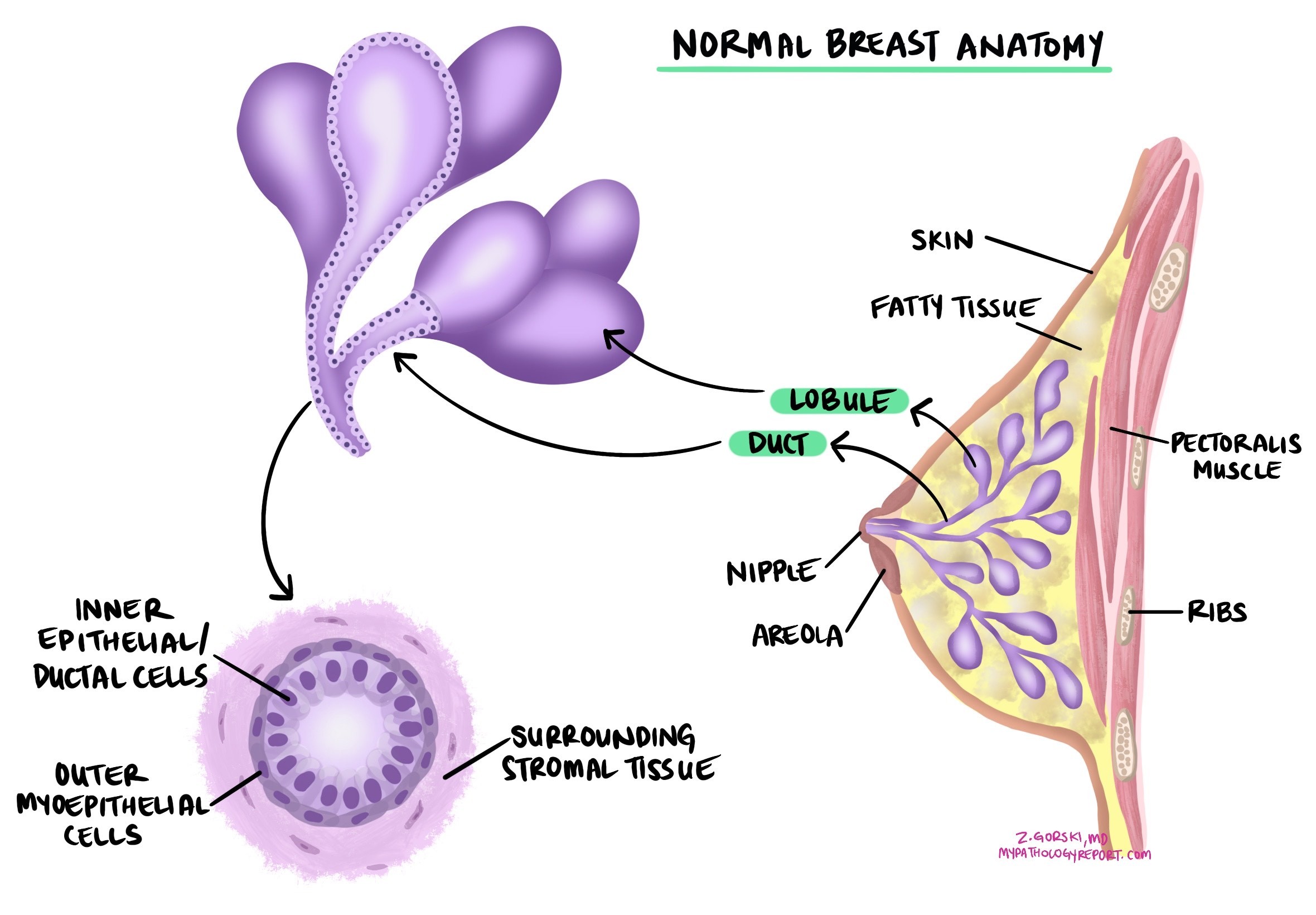by Jason Wasserman MD PhD FRCPC and Zuzanna Gorski MD
July 30, 2025
Usual ductal hyperplasia (UDH) is a non-cancerous (benign) condition commonly found in breast biopsies. It describes an increase in the number of normal-looking cells within the small ducts of the breast, typically in a region of the breast known as the terminal duct lobular unit. These cells multiply in a disorganized manner but do not exhibit signs of cancer or precancerous changes.
Although UDH is not cancerous and is not considered a direct precursor to breast cancer, it is associated with a slightly increased risk of developing breast cancer in the future.

What causes usual ductal hyperplasia?
There is no known single cause of UDH. It is thought to result from hormonal influences, but no specific risk factors have been clearly identified. UDH is a common finding and may develop as part of normal aging changes in the breast.
What are the symptoms of usual ductal hyperplasia?
Most people with UDH do not experience any symptoms. It is usually found incidentally when a biopsy is performed for another reason, such as investigating a breast lump, a mammographic abnormality (such as calcifications), or other benign changes.
UDH does not form a mass and is typically not visible on imaging. Rarely, it may be associated with microcalcifications that lead to further investigation.
What does usual ductal hyperplasia look like under the microscope?
When examined under the microscope, UDH is made up of a collection of cells that have multiplied and filled part of a breast duct. The cells look relatively normal but are arranged in a disorganized, overlapping way. Some areas may show small slit-like spaces called lumina, while others may appear solid.
The cells are often different in size and shape and may include a mix of cell types, such as regular ductal cells, myoepithelial cells, and apocrine cells. Pathologists use several features to recognize UDH and to distinguish it from related conditions such as atypical ductal hyperplasia (ADH) and ductal carcinoma in situ (DCIS), which show more concerning changes.
Immunohistochemistry may be used to support the diagnosis. In UDH, the cells show a mixed pattern of markers, with patchy staining for hormone receptors and a mosaic pattern of proteins typically seen in both luminal and basal-type breast cells.
Is usual ductal hyperplasia a type of cancer?
No. UDH is a benign condition. It is not cancer and is not considered a precancerous lesion. However, UDH is associated with a slightly increased risk of developing breast cancer in the future, especially if you have a strong family history of breast cancer.
The risk is similar to that associated with certain hormonal or reproductive factors, such as early menstruation or late menopause. Most people with UDH will never develop breast cancer, and the finding usually does not require any treatment.
What is the prognosis for usual ductal hyperplasia?
The long-term prognosis for someone diagnosed with UDH is excellent. Although studies show a small increase in breast cancer risk (about 1.5 to 2 times the risk of someone without UDH), most people with UDH will never develop breast cancer. This risk is not limited to the same area of the breast—it applies to either breast. There are currently no features that can reliably predict which individuals with UDH will go on to develop breast cancer.
Your doctor will consider your personal and family history to determine the best follow-up plan. In most cases, no change in screening or treatment is needed.
Questions to ask your doctor
- Was UDH the only finding in my biopsy or was it found alongside another condition?
-
Do I need any additional follow-up or treatment based on this result?
-
Does my family history increase the importance of this finding?
-
Will this diagnosis change how often I need mammograms or other imaging tests?



